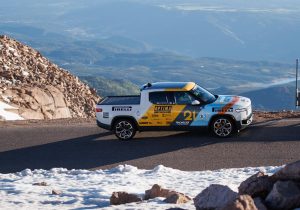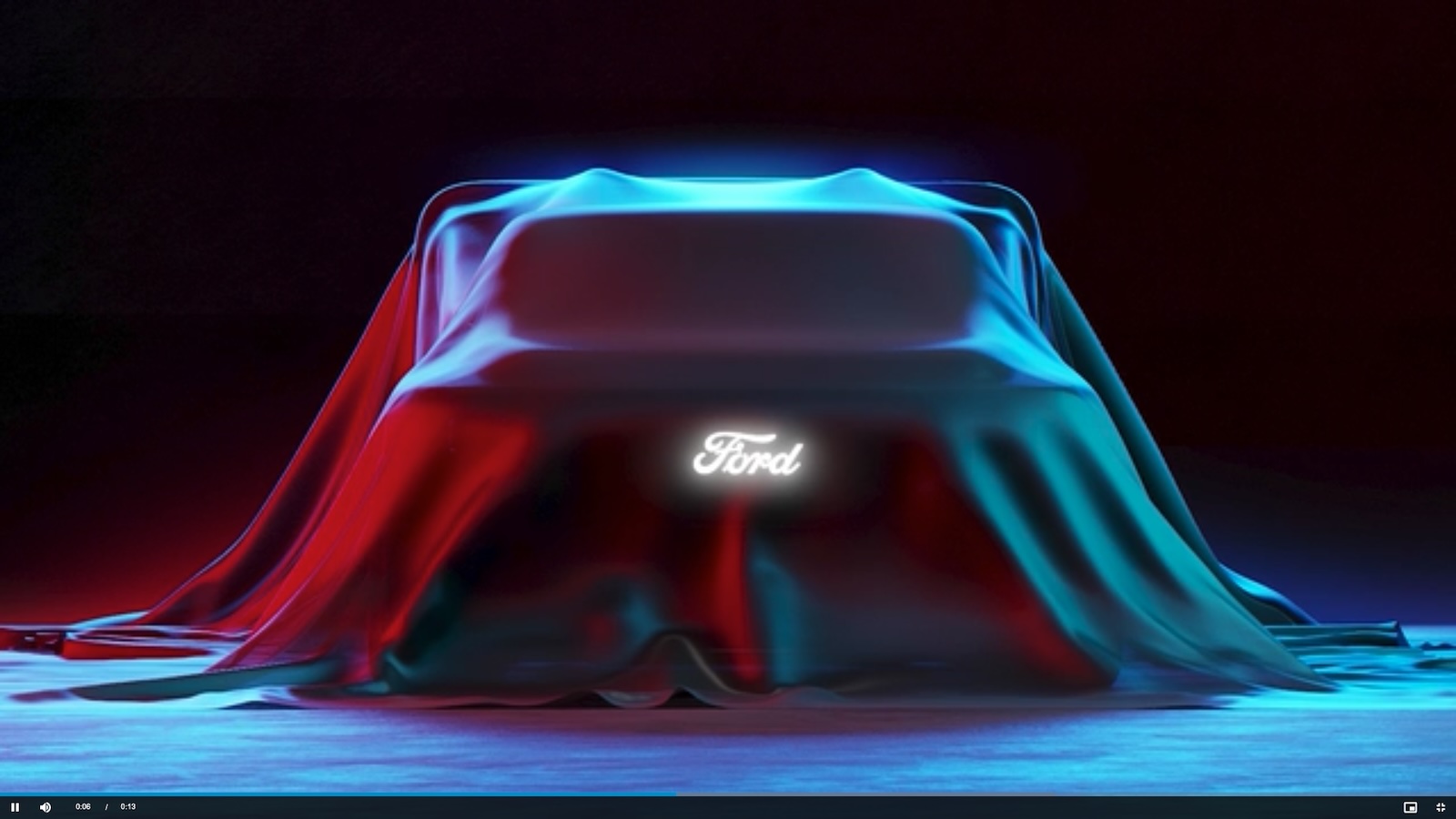Ford is heading to Colorado to summit Pikes Peak with an F-150 Lightning EV demonstrator in June. It’s the second straight year the automaker’s charged up the mountain with an EV, doing so last year in its electric SuperVan.

Ford is headed back to Pikes Peak after running a specially configured Transit EV it dubbed SuperVan 4.2. The van finished second overall.
Literally cloaked in secrecy — check out the lead photo — Ford is returning to Colorado Springs, Colorado to run a specialized version of its F-150 Lightning EV in the Pikes Peak International Hill Climb. It ran the “Race to the Clouds” last year in its SuperVan.
Despite being just 12.5 miles, it’s an incredible dangerous proposition as getting to the top of Pikes Peak requires driver to negotiate 156 turns with names like Bottomless Pit and Devil’s Playground, while climbing from 9,000 feet above sea level to more than 14,000 feet in elevation.
Not only must navigate an endless number of switchbacks, many with no railing to keep you from sliding off the edge, the conditions at the bottom of the mountain where the race starts are often dramatically different than at those at the top. Rain, snow, ice and fog can all make the drive treacherous.
Ford EVs making the run
More and more EVs are becoming a popular option for the hill climb, which began in 1916. As mentioned, Ford took on the mountain last year in an EV. Not its Mustang Mach-E, but a specially outfitted Transit EV.
The SuperVan 4.2 is a wild hillclimb monster that blends 1,400 horsepower of high-tech electric power, Ford proclaims, born from three electric motors, with a body inspired by Ford Pro’s latest E-Transit Custom van.
It was an update of the crowd-wowing Ford Pro Electric SuperVan 4.0 that ran at the Goodwood Festival of Speed 2022, but fresh from a 880-pound weight reduction and super-charged with an enhanced battery and electric motors. It’s also had an aerodynamic redesign to create two tons of downforce at approximately 150 mph for maximum cornering grip.
If you’ve got that kind of vehicle ready to take on the challenge, you need the right driver and Ford tabbed Romain Dumas take on the task. He’s a perfect choice — he’s the record holder for the fastest-ever Pikes Peak hillclimb, and the first to break the 8-minute barrier, which he did in 2018.
Dumas pushed a van to the second-best time of any vehicle, finishing at 8:47.682, about 7 seconds behind the winner in a 2018 Wolf TSC-FS — which is NOT a van but instead a Formula 1-style race car.
More F-150 Lightning stories
- Ford F-150 Lightning Switchgear Demonstrator Takes the EV Pickup to On- and Off-Road Extremes
- Ford Halts Shipments of F-150 Lightning Due to Undisclosed Quality Issue
- Ford Cuts Mach-E Pricing, Adds New F-150 Lightning Incentives
Why go electric?
The higher you go, the less power gas engines develop. The air is thinner, which provides less oxygen to ignite the gasoline in the cylinders. Dumas set the record in an all-electric Volkswagen I.D. R racer, finishing at 7:57:148.

A Rivian R1T ran last year’s race, hoping set a new record for a production vehicle. It finished the race, but missed the record.
In last year’s event, a privately owned Tesla Model S Plaid finished 10th overall, a little more than a minute behind the winner and a Rivian R1T scurried up the course in 11:23.983, good for 46th overall. Not bad considering the production EV record was 11:06.205 set in 2022 by a Tesla Model 3. However, the Model S Plaid came in at 9:54:901 last year.
If the record was set by an EV, why isn’t the mountain filled with EVs? Because they cannot dissipate the heat in the batteries in easily as they head up the hill. As the batteries get hotter, the vehicle loses power. Plus, multiple runs up the hill can drain batteries quickly, and recharging is difficult there.
While more and more EVs will find their way to the mountain, it seems for the foreseeable future, internal combustion remains king of the mountain at Pikes Peak.





0 Comments